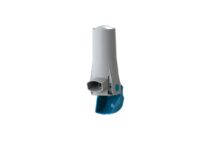According to a study of the reasons behind warning letters sent by the US Food and Drug Administration Center for Drug Evaluation and Research and Center for Devices and Radiological Health between 2010 and 2020, poor current good manufacturing practise (cGMP) compliance and misbranding were the most frequent citations.
Deficiencies in process validation, documentation practises, and quality control were the three major types of breaches that made up the cGMP letters, accounting for 26%, 21%, and 15% of the warning letters, respectively.
FDA warning letters can be a valuable source of information for researching and analysing infractions that take place during the production of pharmaceuticals. Through the ability to recognise and address any problems, these studies can also assist businesses in preparing for impending examinations.
When breaches are discovered during an audit, an FDA warning letter is sent to the manufacturer. However, this only occurs if the firm’s response to the flaws detailed in a form 483 is inadequate. The business is required to take the necessary actions to address the faults specified in the warning letter after receiving it.
Researchers identified not just the main reasons for warning letters but also important areas that FDA investigators may concentrate on when inspecting pharmaceutical producers in a study that was published in the Journal of Pharmaceutical Innovation. The authors located and examined 3777 warning letters from CDER and CDRH in total. In general, the most significant cGMP violations were validation, documentation, and quality control.
The researchers did observe that between 2015 and 2020, pharmaceutical producers received more warning letters than medical device makers. Misbranding and poor cGMP compliance were the main causes of this.
The production, buildings and equipment, laboratory control, materials systems, and packaging and labelling systems are five manufacturing systems that are connected to the FDA’s quality system, which is the heart of its six-system inspection model, according to the authors.
The researchers reached the conclusion that pharmaceutical companies should put their attention toward creating efficient quality management systems that regulate the entire production process, quality control, employee training, and documentation practises, as well as keeping up with guidelines and standards to make sure they are aware of the regulatory agency’s expectations, in order to have a successful inspection. Experts advise businesses to create a compliance monitoring check list and get ready to take corrective action if necessary.




















